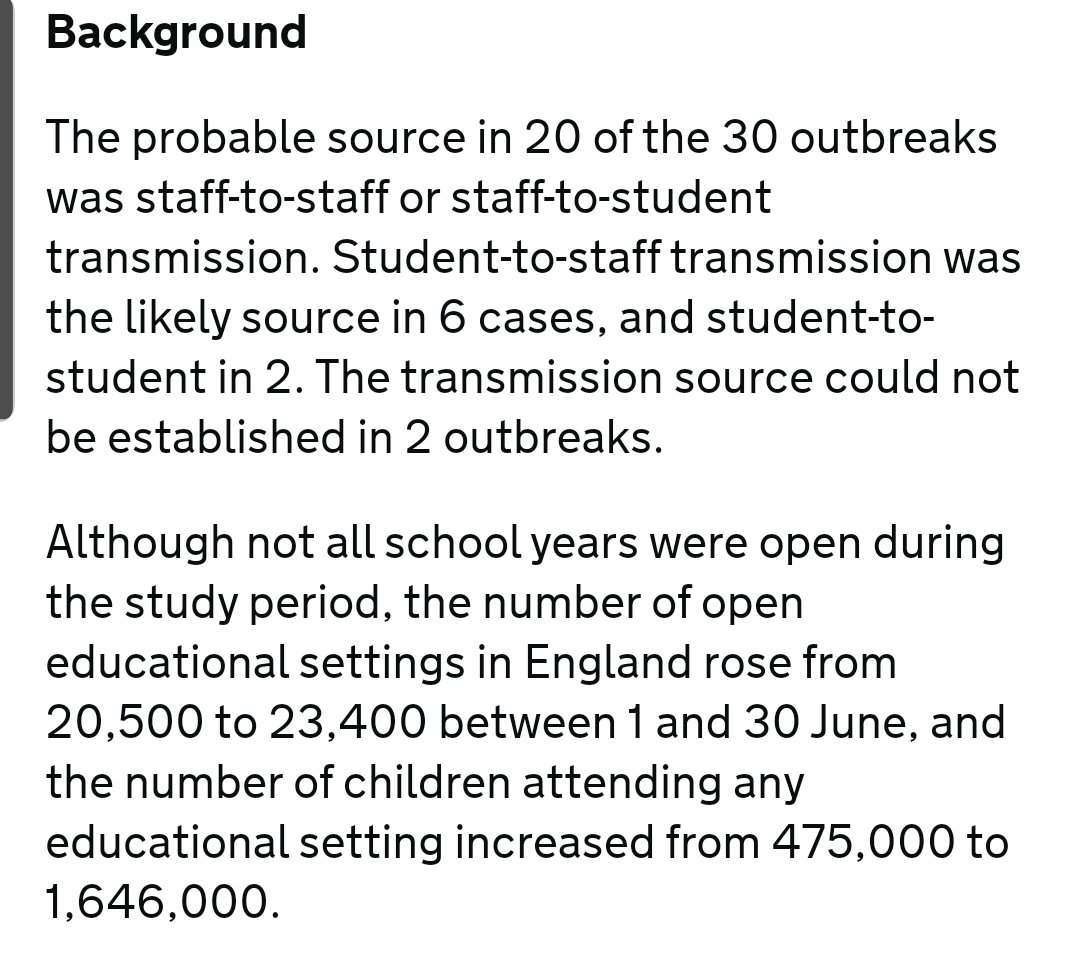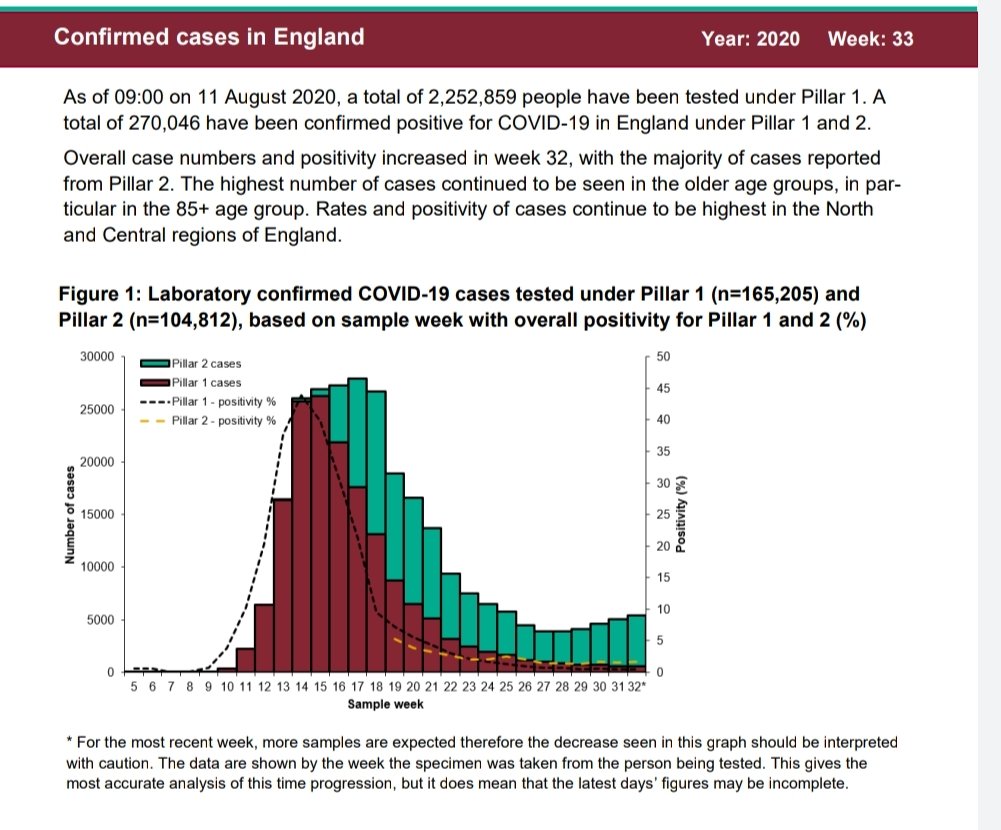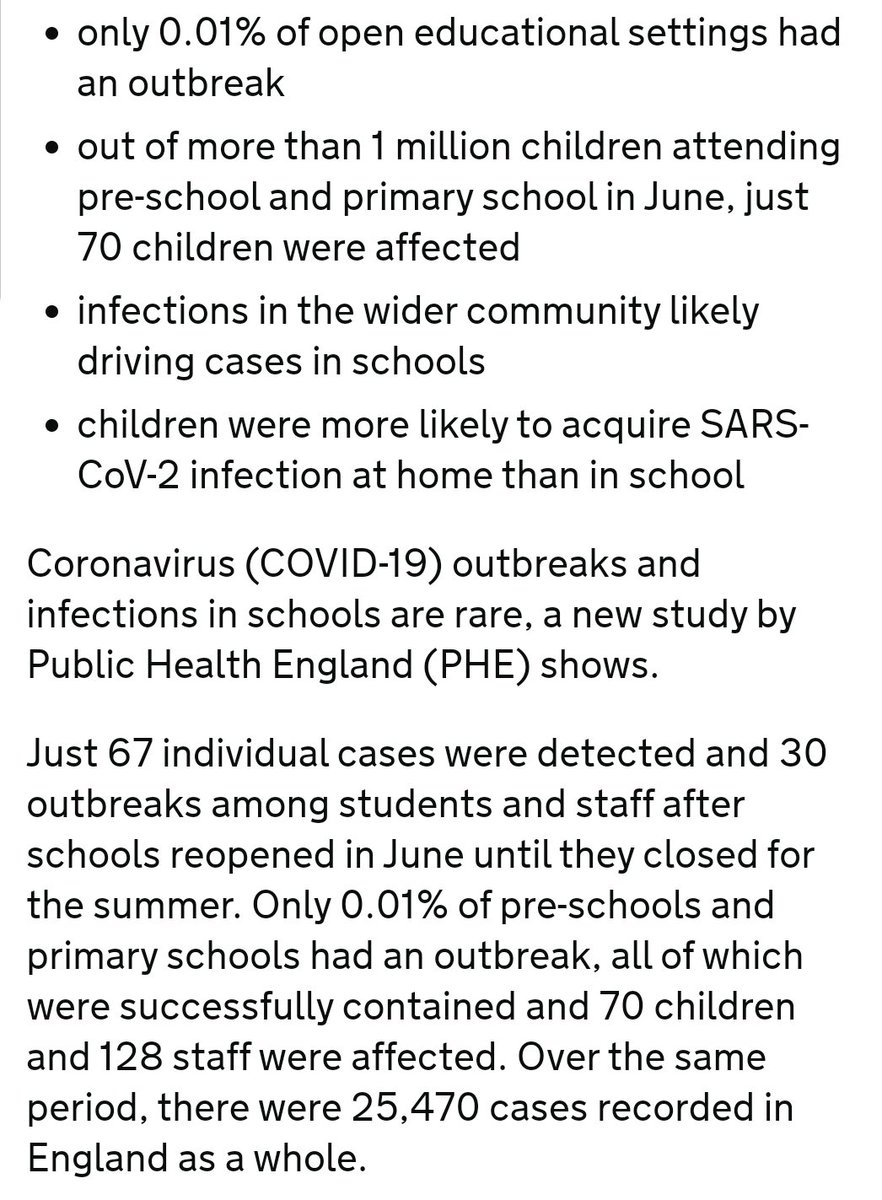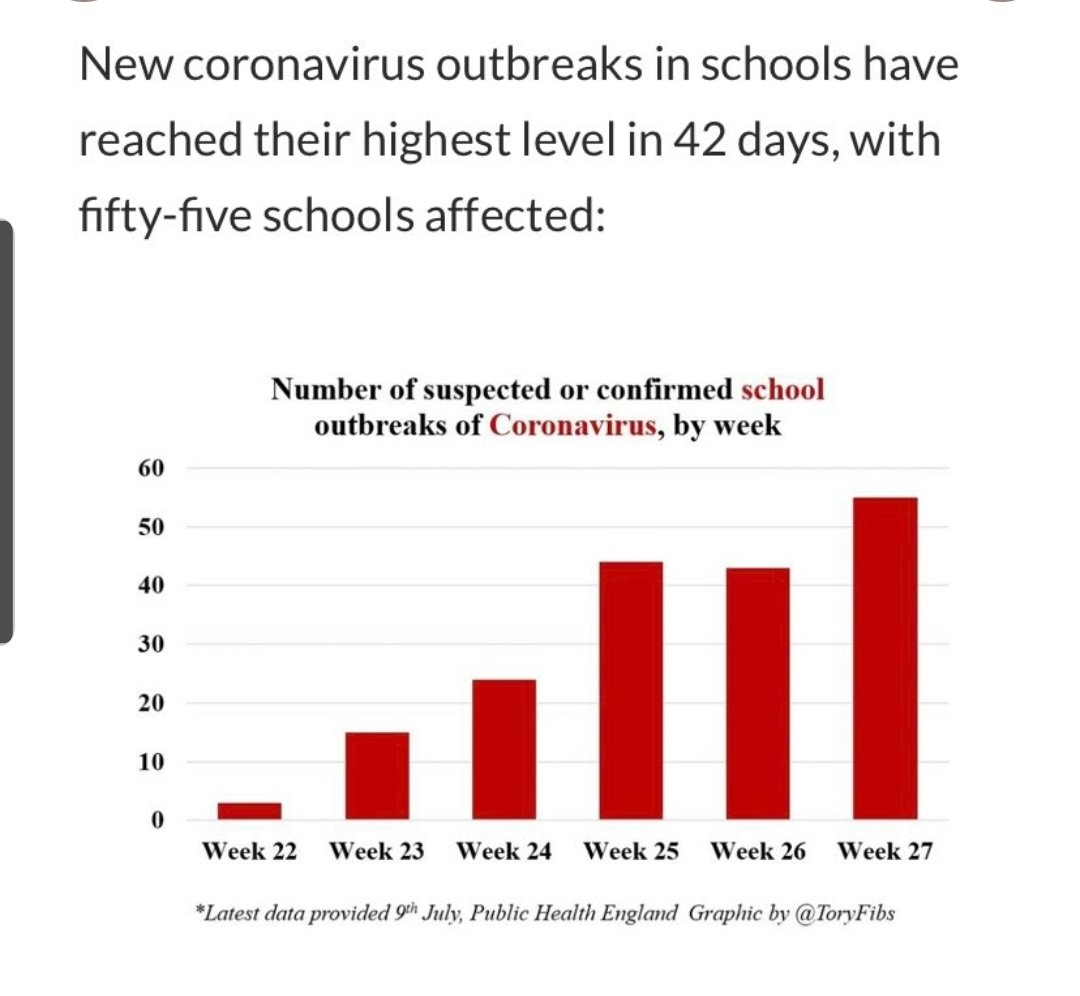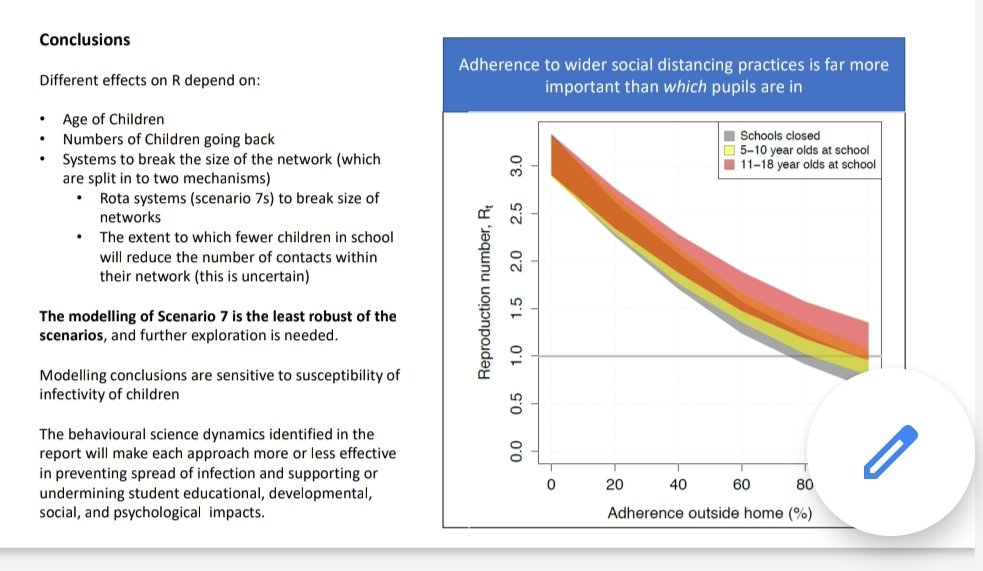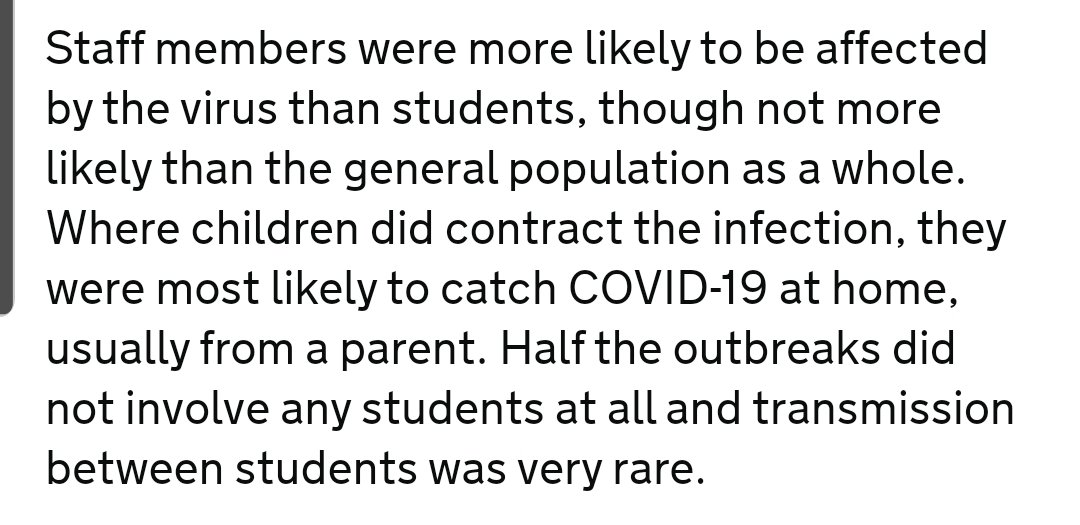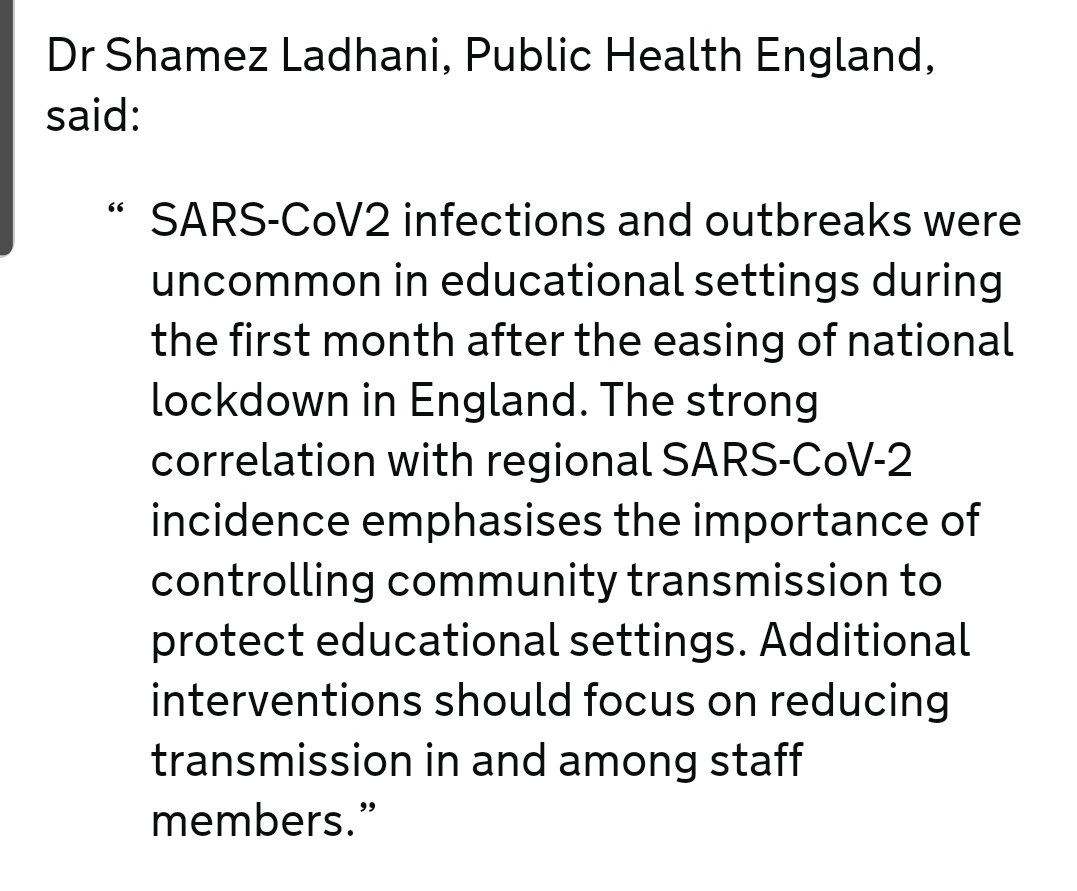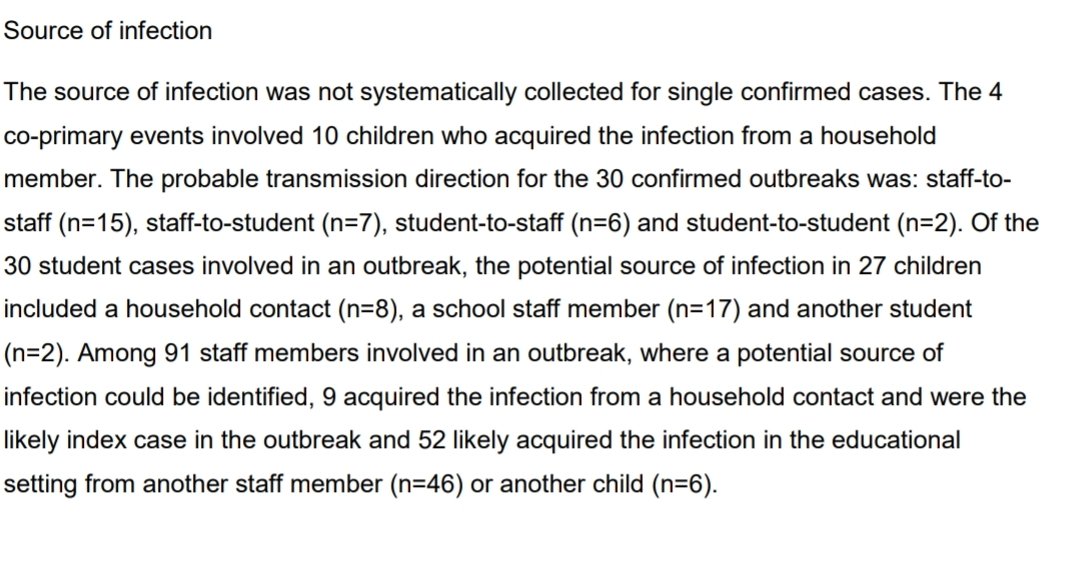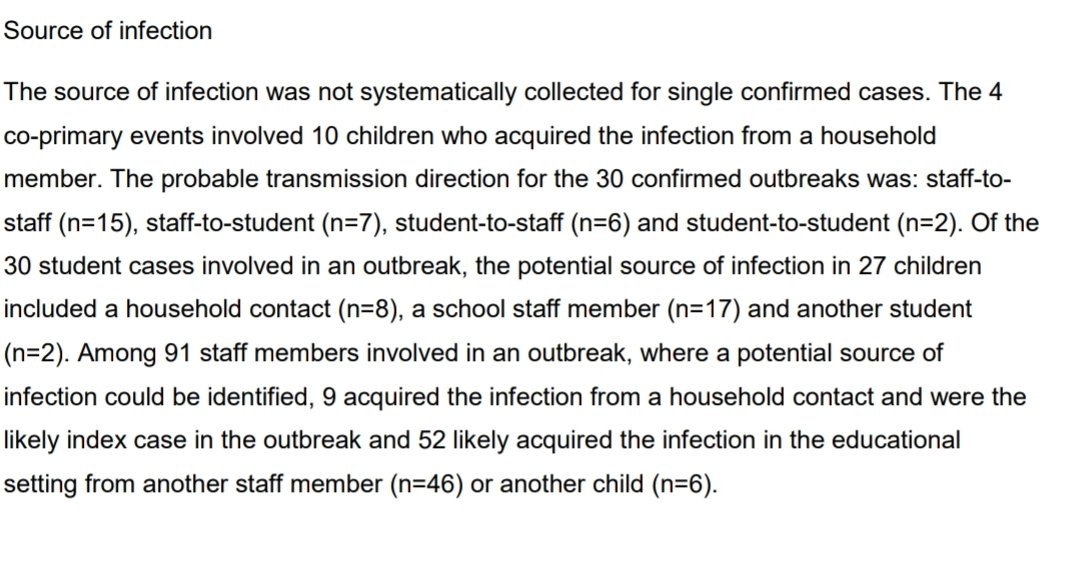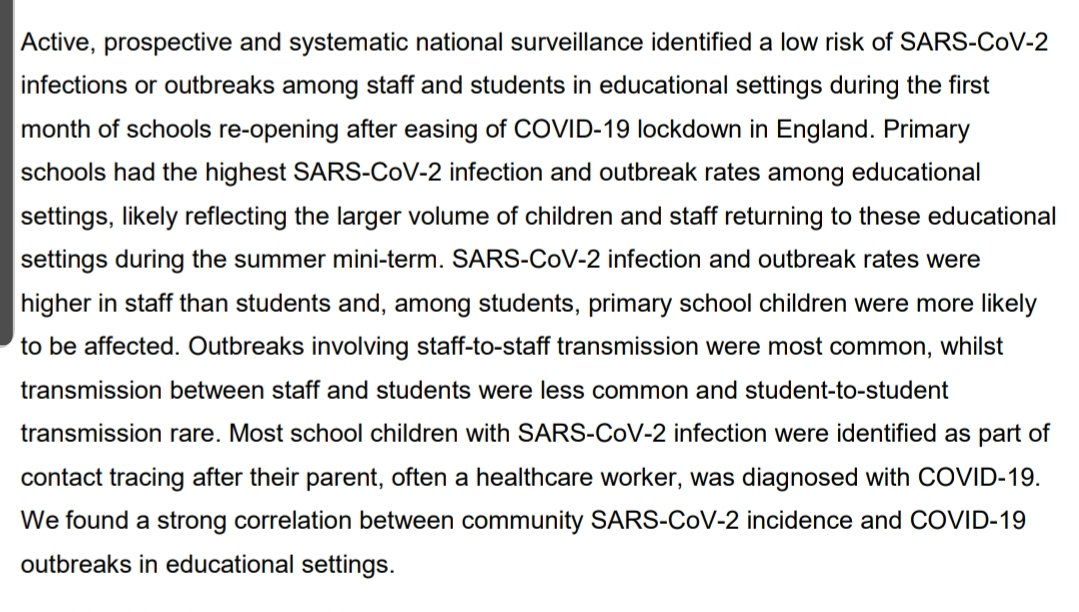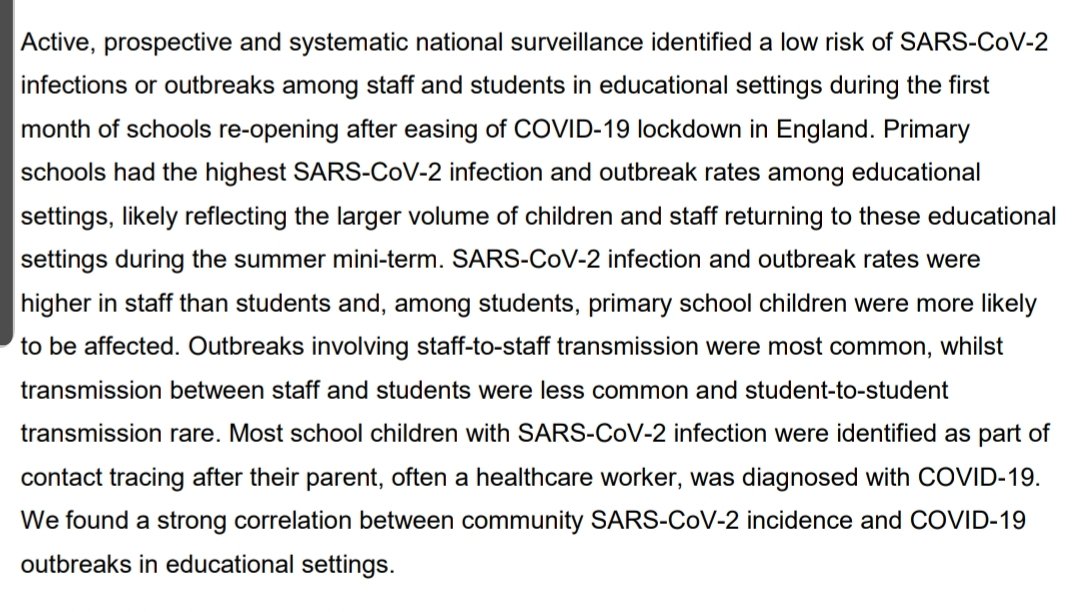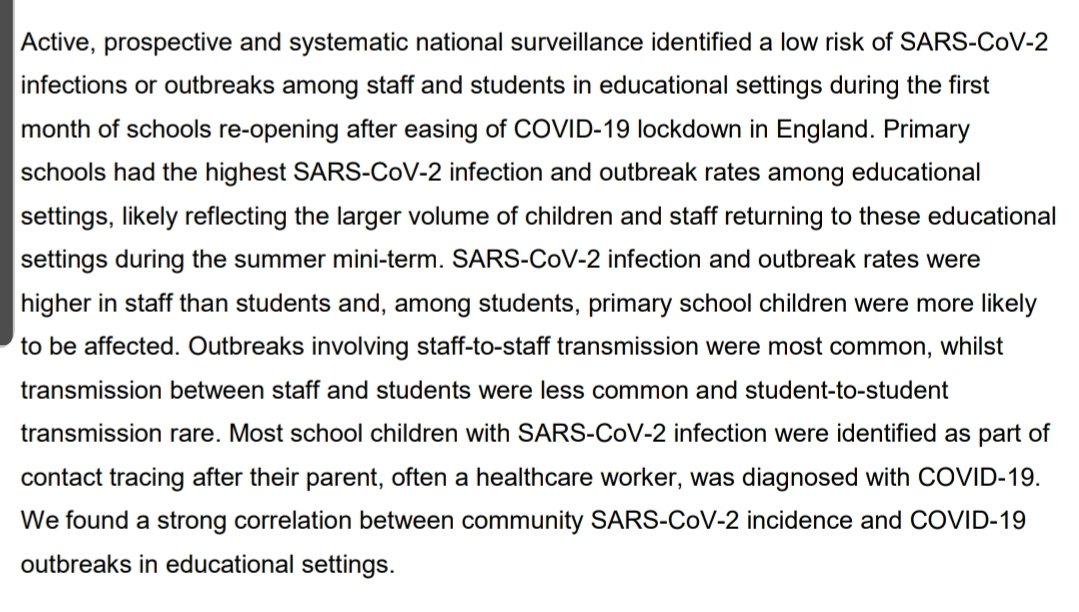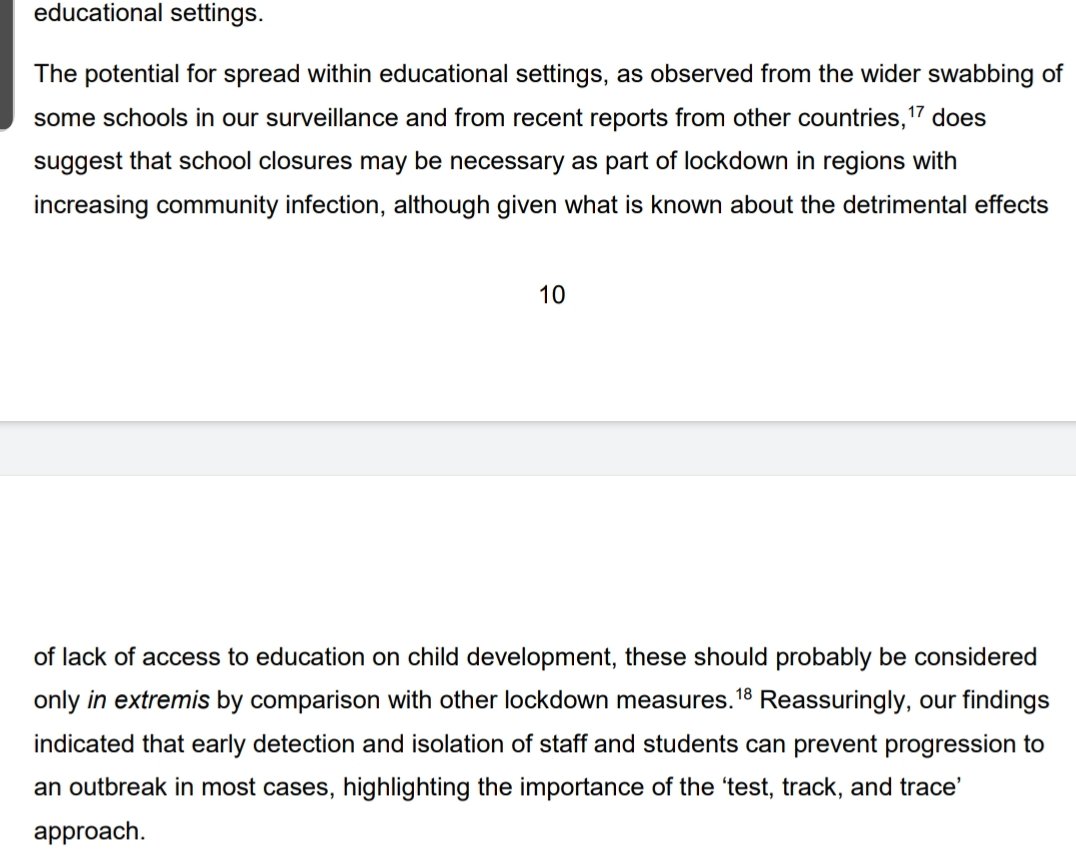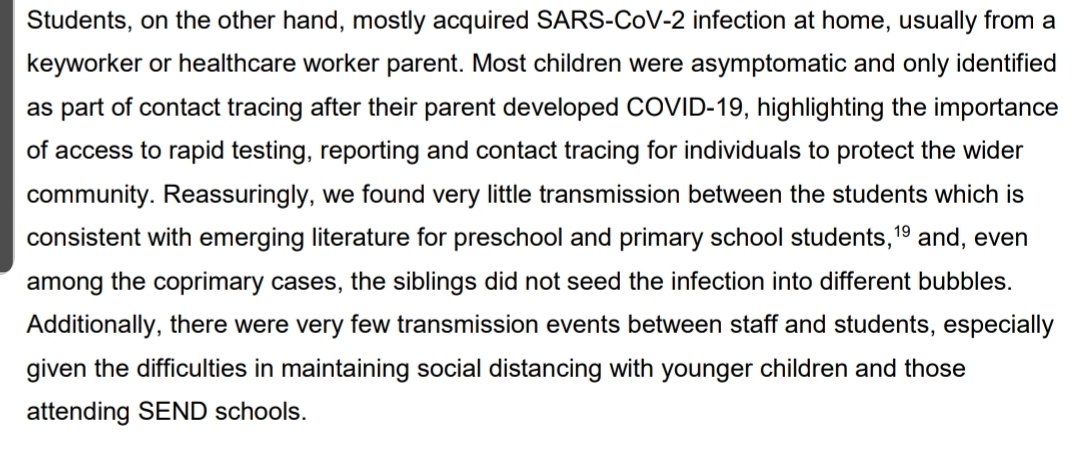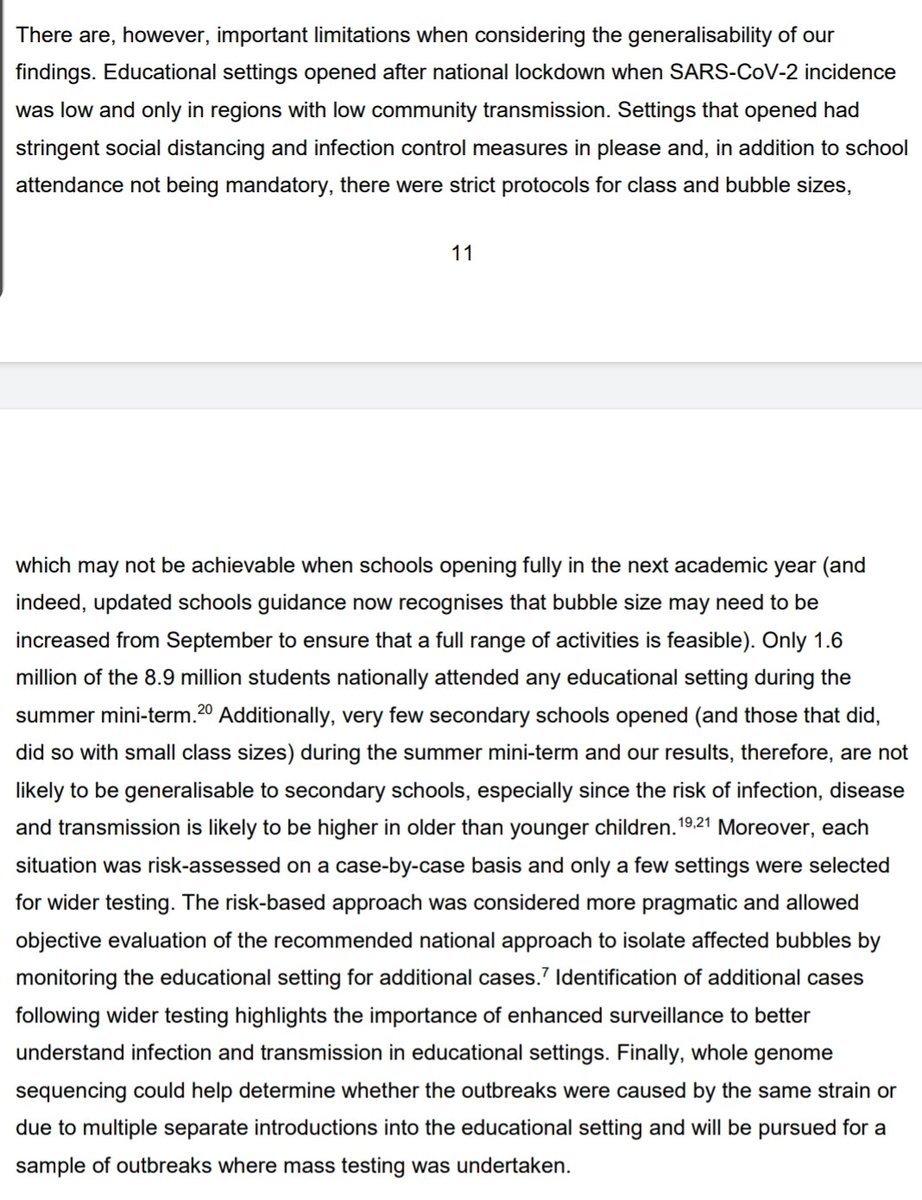1/ Thread: PHE into Covid in school.
What does it say?
What doesn& #39;t it say?
How has it been communicated and how does it compare to previous SAGE advice
#edutwitter https://www.gov.uk/government/news/study-finds-very-low-numbers-of-covid-19-outbreaks-in-schools">https://www.gov.uk/governmen...
What does it say?
What doesn& #39;t it say?
How has it been communicated and how does it compare to previous SAGE advice
#edutwitter https://www.gov.uk/government/news/study-finds-very-low-numbers-of-covid-19-outbreaks-in-schools">https://www.gov.uk/governmen...
2/ Background, the report looks at
data in June and July.
On average primaries had 2 year
groups in, many secondaries didn& #39;t
go i until later in June, only 10s
+ 12s and often only 25% of those at a time.
So what it can tell us about 100% attendance is very limited
data in June and July.
On average primaries had 2 year
groups in, many secondaries didn& #39;t
go i until later in June, only 10s
+ 12s and often only 25% of those at a time.
So what it can tell us about 100% attendance is very limited
4/ PHE Report goes on confirmed cases, at the moment only those with symptoms in schools get tested, usually even after a confirmed outbreak, so when they talk of cases in schools its only confirmed and this isn& #39;t picking up asymptomatic cases which are more likely in students
5/ I& #39;m also a little confused by the report saying there were only only 30 outbreaks.
Considering the below graph is from PHE in mid July, there were more outbreaks in schools than hospitals or care homes.
Granted could be a gap between suspected and confirmed.
Considering the below graph is from PHE in mid July, there were more outbreaks in schools than hospitals or care homes.
Granted could be a gap between suspected and confirmed.
6/ There& #39;s also this table from last
weeks PHE surveillance report. This
is from the last 4 weeks, only the first week was when students were in schools.
weeks PHE surveillance report. This
is from the last 4 weeks, only the first week was when students were in schools.
7/ Infection levels impact risks in schools, seems a common sense statment, however surely schools are part of the community, and this was with limited student numbers and proper social distancing.
Notice masks are important OUTSIDE of school...
Notice masks are important OUTSIDE of school...
8/ This is from SAGE a while ago, adherence to social distancing outside of school is considered the most important factor, its why the push for pubs and stopping people home working by gov suggests they haven& #39;t read or understood this advice
9/ it also suggests the CMOs have
been intentionally careful with their
words. Last week Whitty said we
were at the limit of opening in
regards to RO, if infections rise then risks in schools will naturally increase.
been intentionally careful with their
words. Last week Whitty said we
were at the limit of opening in
regards to RO, if infections rise then risks in schools will naturally increase.
10/ This is why Independent SAGE
suggested a ladder of measures
dependent on local data.
Schools are integrated in their
communities, the issue is about
them amplifyinq transmission in the
community, the gov PHE report
doesn& #39;t do enough to address this enough
suggested a ladder of measures
dependent on local data.
Schools are integrated in their
communities, the issue is about
them amplifyinq transmission in the
community, the gov PHE report
doesn& #39;t do enough to address this enough
11/ Full look at the @IndependentSage report here.
Currently the gov has no Plan B if cases start to rise and the PHE report does recognise this would increase risks in schools https://twitter.com/karamballes/status/1294320685251276802?s=19">https://twitter.com/karamball...
Currently the gov has no Plan B if cases start to rise and the PHE report does recognise this would increase risks in schools https://twitter.com/karamballes/status/1294320685251276802?s=19">https://twitter.com/karamball...
12/ Due to the time period the data was collected all this really tells us is that social distancing and reduced student numbers keeps infection levels low, doesn& #39;t tell us much about having every classroom full
13/ Also wondering if this quote has been taken out of context by the papers. Its saying more needs to be done to reduce transmission in staff, it doesn& #39;t blame staff like the Times suggest, could just be saying we deserve more protections
14/ What hasn& #39;t been mentioned?
Nothing about the need to inprove test and trace. This is something Whitty has said in the past, and was a constant gov message in April, TTI is vital to reducing lock down (and ours will be world beating)
Issues https://abs.twimg.com/emoji/v2/... draggable="false" alt="⬇️" title="Pfeil nach unten" aria-label="Emoji: Pfeil nach unten"> https://twitter.com/karamballes/status/1292726624979492865?s=19">https://twitter.com/karamball...
https://abs.twimg.com/emoji/v2/... draggable="false" alt="⬇️" title="Pfeil nach unten" aria-label="Emoji: Pfeil nach unten"> https://twitter.com/karamballes/status/1292726624979492865?s=19">https://twitter.com/karamball...
Nothing about the need to inprove test and trace. This is something Whitty has said in the past, and was a constant gov message in April, TTI is vital to reducing lock down (and ours will be world beating)
Issues
15/ So time to take a look at the full study. When gov starts talking about the science its generally best to put their choice quotes back into context. https://www.gov.uk/government/publications/sars-cov-2-infection-and-transmission-in-educational-settings">https://www.gov.uk/governmen...
16/ SS1: The comments about who is infecting who isnt based on genonic sequencing as other countries have done, later the report does suggests this would be a better method. Students unlikely to infect adults is based on probability of contacts.
17/ SS1: Of 91 staff it estimates 9 were infected at home while 52 were infected in education settings, the others couldn& #39;t have potential sources identified. The Times made it seem like staff were to blame for infections. The most certain finding here is that staff are more
18/ likely to be infected at work than in the community, not that their behaviour in general is driving infection.
19/ SS2: Report says there were more outbreaks in primary than secondary, and that the main reason is most likely that primaries had more students and staff in before summer than secondaries.
More students and staff = more outbreaks.
The comments about low infection rates only
More students and staff = more outbreaks.
The comments about low infection rates only
20/ apply to the conditions in the schools at this time.
Student infections were most likely detected by contact tracing after a household member working in healthcare tested positive.
Healthcare most likely to get tested regularly, does this contact tracing pick up asymptomatic
Student infections were most likely detected by contact tracing after a household member working in healthcare tested positive.
Healthcare most likely to get tested regularly, does this contact tracing pick up asymptomatic
21/ cases which are being missed in school?
Does missing asymptomatic spread explain why numbers say its more probable staff infect each other?
If its based on contact on confirmed cases and generally only symptomatic get tested, students are less likely to have symptoms.
Does missing asymptomatic spread explain why numbers say its more probable staff infect each other?
If its based on contact on confirmed cases and generally only symptomatic get tested, students are less likely to have symptoms.
22/ Report points out the measures
in schools like social distancing; which we Heal! have in September
may have contributed to low infections. High correlation between rising rates and school outbreaks is
identified. Also points out schools didn& #39;t increase student numbers in
in schools like social distancing; which we Heal! have in September
may have contributed to low infections. High correlation between rising rates and school outbreaks is
identified. Also points out schools didn& #39;t increase student numbers in
23/ areas of high incidence. Report suggests lockdown measures may be required in areas with high incidence but recomnends closing other places first.
At the moment gov is refusing to plan for this eventuality.
At the moment gov is refusing to plan for this eventuality.
24/ I saw a similar comment in an earlier SAGE document, it wasn& #39;t saying staff were less careful outside of school, but that due to the risks of transmission in school we should take more care than others to protect the community by not bringing Covid into school
25/ Confirmation asymptomatic spread is only being picked up by contact tracing, so the data set being used for schools might not be reliable or representative of the reality.
Rapid testing and TTI is vital, how long until it is good enough, mass testing for asymptomatic spread?
Rapid testing and TTI is vital, how long until it is good enough, mass testing for asymptomatic spread?
26/ Finishs with "important limitations"
Recognises community infections and student numbers were low, and that not all safety measures during this time will be implementable in September.
Recognises community infections and student numbers were low, and that not all safety measures during this time will be implementable in September.
27/ Biggest limitation? Did you notice that nearly the whole report specifically talks about primary and pre school.
"These findings cant be generalised to secondary, especially since the risk of infection, disease and transmission is likely to be higher in older than younger"
"These findings cant be generalised to secondary, especially since the risk of infection, disease and transmission is likely to be higher in older than younger"
28/ Very few situations were selected for mass testing which the report says makes its findings less reliable.
Says that enhanced surveillance and mass testing is required to better understand this
Says that enhanced surveillance and mass testing is required to better understand this
29/ Remember that vital study the papers and gov spent a week talking about that was going to prove children didn& #39;t transmit as much, then someone from SAGE said their comments had been taken out of context? And that infectiousness of under 10s is lower but it appears older
30/ students are as infectious as adults. This would match the large South Korean study, which they took as a warning sign. Our government appears to have taken similar results and have quoted comments about primary schools and made it seem it applied to all students.
31/31 Will have to check the CMOs letter again now to check the
precise wording.
In summary the report states its own limitations, primary may have less risks (although SK study said primary student behaviour increased risk) but none for secondaries.
precise wording.
In summary the report states its own limitations, primary may have less risks (although SK study said primary student behaviour increased risk) but none for secondaries.

 Read on Twitter
Read on Twitter